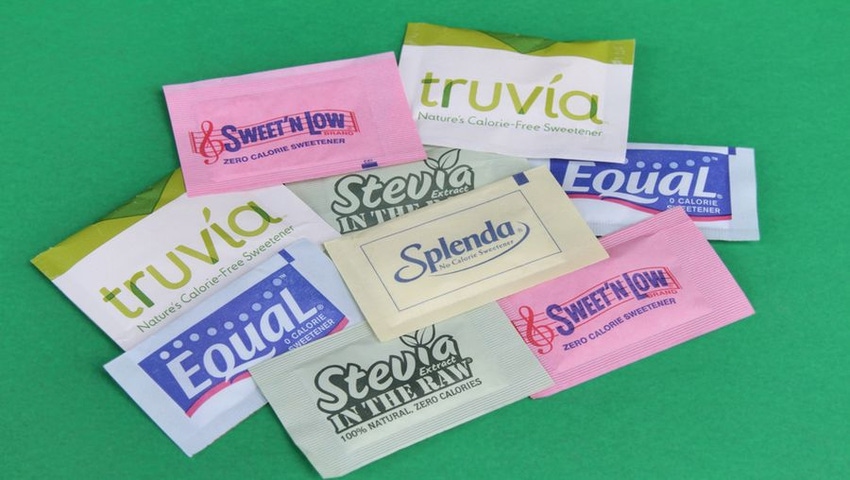A look at the history of alternative sweeteners reveals beverage manufacturers’ growing quest to find natural, healthy sweeteners to serve their consumers.
July 27, 2016

Beverage manufacturers have benefited from the continuous evolution of sugar substitutes and alternative sweeteners brought about by technologies developed to address challenges related to the base raw ingredient. The first “sugar alteration"—hundreds of years ago—added chemicals in the refining process to enable a more stable supply. Even with that enhancement, sugar supply and prices fluctuated, creating challenges for manufacturers as populations globally started consuming more sugars in their diet.
The discovery of glucose in the 1940s created a first generation of “sugar," meaning monosaccharides/disaccharide. As a result, glucose became a widely known “sugar" using enzymes and starch processing technologies. Although its taste was slightly different from sucrose, it enabled a more economical supply option. In the 1960s, glucose’s taste was improved by adding fructose through the use of another enzyme. Glucose-fructose technologies brought high-fructose starch syrup (HFSS) to the market. HFSS became the first ingredient thought of as a sucrose replacement and was embraced by beverage manufacturers globally for soft drinks and juices.
The sucrose replacement evolution continued, and revolved around the challenges to cut all calories while reducing cost and improving formulation. We already knew sugar and sweetener consumption was identified as a factor in increasing levels of obesity and diabetes. And while there was improved supply for manufacturers because of sucrose and HFSS technologies, the added supply also contributed to more use in food and beverages, and more consumer intake of both sugars. So, calorie reduction became a huge industry challenge. It has been and is a major demand from the beverage market and believed to be a healthier solution for obesity and diabetes. This demand has been fulfilled by two alternatives: sugar alcohols and high-intensity sweeteners (HIS).
Sugar alcohols such as maltitol and sorbitol were developed to cut calories with little additional cost. They have 70 to 90 percent of sucrose’s sweetness, only a slight taste difference compared to sucrose, and are well accepted in the market.
Other big successes in this era have been HIS products, which include acesulfame potassium, aspartame, saccharine and sucralose. HIS products have a different intensity of sweetness compared to sucrose:
• Acesulfame Potassium [200 times sweeter]
• Aspartame [100 to 200 times sweeter]
• Saccharine [200 to 700 times sweeter]
• Sucralose [600 times sweeter]
Saccharine is an example of a product that satisfies the sweetness demand in a cost-effective way. One negative of saccharine is its bitterness, so manufacturers sometimes choose the aspartame and acesulfame potassium combination because of its synergistic sweetness profile. Other manufacturers prefer to formulate with sucralose because of its more sucrose-like sweetness. They are all cost-effective approaches, and beverage manufacturers benefit, though they may be sacrificing taste and some properties of sucrose.
While all of the above products provide no-calorie beverage formulation solutions, they have not slowed the global increase in obesity and diabetes. According to the World Health Organization (WHO), obesity is preventable. Manufacturers will therefore continue to opt for these sweetener alternatives. More recently, many companies have gone “back to the lab" to improve the products just listed and already in market.
Now we come to the next era of sugar replacement and alternative sweeteners marked by the introduction of stevia leaf. While we might categorize this as a HIS product, the difference is that the stevia leaf is a plant that exists in nature. Stevia leaf-based sweetener products carry the perception of being naturally rather than chemically produced. Japan was the first major country with markets exposed to stevia leaf sweeteners in the 1990s. At that time, the issue was that stevia had a grassy note and delivered an “off taste" that many people did not like. Companies tried to improve its taste by using plant breeding technologies, enzymes and other techniques believed to be “natural" technologies. After some years, steviol glycosides, such as rebaudioside A (Reb A), were discovered and proved to be better for certain applications. Erythritol, a high-end, low-calorie sugar alcohol, was also developed and was combined mostly with stevia family sweeteners because of the “natural" perception for consumers.
Some companies continue to develop different types of HIS such as neotame (from NutraSweet) and advantame (from Ajinomoto Co). Neotame has 7,000 to 13,000 times the sweetness compared to sucrose, and its sweet taste is recognized much later by the brain (once it is on the tongue) than HIS such as saccharin and acesulfame potassium. Advantame is 20,000 to 40,000 times sweeter than sucrose, and its sweetness is also delayed longer than a current HIS like aspartame.
Other companies have gone back to creating a type of sugar based on starch processing technologies. When different kinds of enzymes are applied to starches, rare sugars such as allulose are formed. Allulose is a low calorie rare sugar with 70 percent of sucrose’s sweetness. It has the same properties as sucrose in bulking, viscosity/mouthfeel, and browning for foods. As with other alternative sweeteners, allulose has the health benefit of lowering blood glucose and blood insulin levels when it is consumed with sugars.
When will the next generation of sweeteners come? Will only products derived in some way from naturally occurring plant-based materials fulfill demand? Do we go back to using only sugar or even unprocessed cane sugar juice, or will even more new technologies be developed? As we experienced with the huge exposure of HIS, the market will find its solution.
Looking for more on key considerations in formulating beverages with functional ingredients? Join us for the Sparking Beverage Innovation workshop on Wednesday, Oct. 5, at SupplySide West 2016. More information on sweeteners will also be addressed in Selecting Appropriate Sweeteners for the Confectionery Space panel discussion on Friday, Oct. 7.
Tetsuo Iida, Ph.D., is manager of rare sugar research and development at Matsutani Chemical Industry Co. Ltd. (matsutani.co.jp) based in Japan. Matsutani Chemical Industry develops Astraea™ Allulose sugar.
About the Author(s)
You May Also Like




.png?width=800&auto=webp&quality=80&disable=upscale)